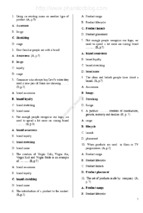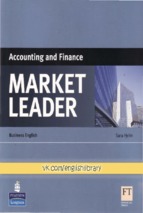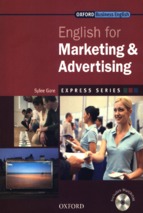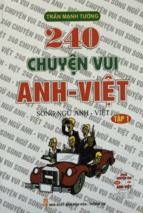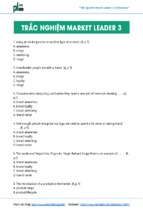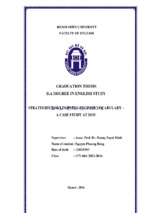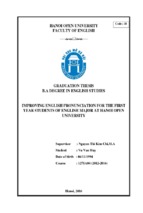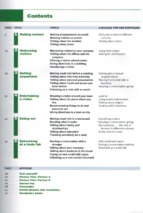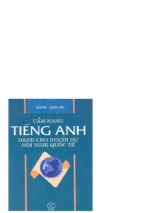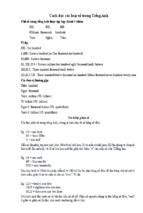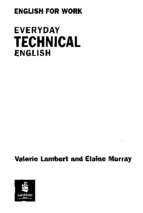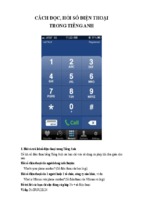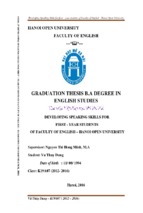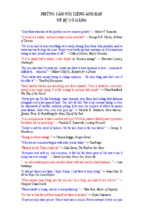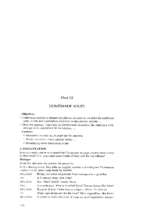TRƯỜNG ĐẠI HỌC CẦN THƠ
GIÁO TRÌNH TIẾNG ANH CHUYÊN NGÀNH
ANH VĂN NGOẠI THƯƠNG 2
Biên soạn: LƯU NGUYỄN QUỐC HƯNG, Th.S.
2009
1
TRƯỜNG ĐẠI HỌC CẦN THƠ
CỘNG HÒA XÃ HỘI CHỦ NGHĨA VIỆT NAM
TRUNG TÂM NGOẠI NGỮ
Độc lập - Tự do - Hạnh phúc
ABOUT THE AUTHOR
I. THÔNG TIN VỀ TÁC GIẢ
Họ và tên: Lưu Nguyễn Quốc Hưng
Sinh năm: 26.01.1970
Cơ quan công tác: Trung tâm Ngoại ngữ,
Trường Đại học Cần Thơ
Địa chỉ email để liên hệ:
[email protected]
II. PHẠM VI VÀ ĐỐI TƯỢNG SỬ DỤNG
• Giáo trình có thể dùng tham khảo cho những ngành nào: sinh viên ngành ngoại
thương
• Có thể dùng cho các trường nào: Khoa Kinh tế & Quản trị Kinh doanh, Trường Đại
học Cần Thơ, chuyên ngành ngoại thương, các trường Kinh tế
• Các từ khóa: (Đề nghị cung cấp 10 từ khóa để tra cứu): internatinal trade, import,
export, world trade, WTO, compete, SWOT, business trend, globalization, ecommerce
• Yêu cầu kiến thức trước khi học môn này: học viên cần có kiến thức anh văn tổng
quát tương đương trình độ B (trung cấp) để bắt đầu chương trình 1 (international trade
1) và hoàn thành chương trình 1 để tiếp tục chương trình 2 (international trade 2).
• Đã xuất bản in chưa, nếu có thì nhà xuất bản nào: chưa
2
CONTENT
ABOUT THE AUTHOR................................................................................................................. 2
CONTENT ...................................................................................................................................... 3
UNIT 1: INTRODUCTION ............................................................................................................ 4
LESSON 1: GREETINGS AND INTRODUCTION.................................................................. 4
UNIT 2: YOU AND YOUR COMPANY....................................................................................... 7
LESSON 2: PERSONAL AND ORGANIZATIONAL PROFILE ............................................ 7
LESSON 3: COMPANY CULTURE ......................................................................................... 9
LESSON 4: COMPANY ORGANIZATION ............................................................................... 13
UNIT 3: COMPANY ACTIVITIES ............................................................................................. 17
LESSON 5: SELLING AND BUYING.................................................................................... 17
LESSON 6: SALES AND NEGOTIATION ............................................................................ 23
LESSON 7: SALES DOCUMENTATIONS ............................................................................ 28
UNIT 4: FOREIGN EXCHANGE................................................................................................ 31
LESSON 8: CURRENCY EXCHANGE.................................................................................. 31
LESSON 9: PAYMENT IN INTERNATIONAL TRADE ...................................................... 35
UNIT 5: TRANSPORTATION .................................................................................................... 38
LESSON 10: METHODS OF TRANSPORTATION .............................................................. 38
LESSON 11: DISTRIBUTION................................................................................................. 41
UNIT 6: IMPORT & EXPORT .................................................................................................... 44
LESSON 12: IMPORT & EXPORT REGULATIONS............................................................ 44
LESSON 13: INTERNATIONAL TRADE REGULATIONS................................................. 46
LESSON 14: QUOTATIONS................................................................................................... 50
UNIT 7: CONSOLIDATION........................................................................................................ 53
LESSON 15: REVISION .......................................................................................................... 53
REFERENCES.............................................................................................................................. 63
GLOSSARY.................................................................................................................................. 64
3
UNIT 1: INTRODUCTION
LESSON 1: GREETINGS AND INTRODUCTION
Starting a conversation.
1.1
Look at the following pictures. What do you think people say in each situation to start
the conversation?
1.2
Match the conversation openings on the left with the places where they can be asked
on the right. The first one is done as an example.
a) Have you been waiting long?
b) Excuse me, does your company have a stand here?
c) Have you worked here long?
d) Do you fly a lot?
e) Excuse me, is this seat free?
At a bus stop: a
On a factory visit
On a train
At a trade fair
On a plane
1.3
Think of more conversation openings
4
1.4
Complete the following conversations.
a) I don’t think we’ve met. My name’s Tim Reed.
- ………………………………… I’m Mike Lam.
b) Are you going to Osaka on business?
- ………………………………… .
c) Nice party, isn’t it?
- Really nice. I’m ………………………………… .
d) May I sit here?
- ………………………………… .
Listen and check your answers.
1.5
Introduce yourself to another student.
Hello, / Hi, nice to meet you. I’m …
I come from / I’m from … . I work for …
1.6
Find out about some other students. Ask and answer these questions
Where do you live?
Who do you work for?
What does your company do?
How many employees does it have?
Who are your main customers?
What are you responsible for?
What do you like doing in your free time?
Ending a conversation
1.7
Here are some ways of ending a conversation. Listen and complete the blanks with
missing words.
Dialogue 1
A: Well, it was very nice ……………. to you.
B: Yes, we must ……………. again sometime.
A: That would be ……………. Here’s my card. Maybe we can get together …
……………. time you’re in town.
B: I ……………. so. And here’s my card.
Dialogue 2
A: Well, it was ……………. to see you ……………., Harry.
B: Yes. And we should get together again soon. How about ……………. next week?
A: That would be great. Give me a call at the office, and we’ll ……………. a time.
B: Fine. ……………. you next week, Frank.
5
Dialogue 3
A: Your new ……………. sounds very interesting. Could you send me a price
…………….?
B: Yes, of course. I’m very sorry, but would you ……………. me? I have to make
an ……………. phone call.
A: …………….
Dialogue 4
A: Your new product sounds very …………….. Could you …
B: Sorry. I have to ……………. to that woman over there. She’s an important
……………. .
A: Oh! … of course.
In which dialogue(s):
- Do A and B know each other well?
- Does A decide to end the conversation?
- Does B decide to end the conversation?
- is B impolite? Why?
1.8
Can you think of any other ways of ending a conversation?
1.9
With a partner, practice meeting someone for the first time at a business reception. Use
real or imaginary information about yourself. Try to continue the conversation for as
long as possible, using the following table as a guide.
Begin the conversation
⇓
Introduce yourself
⇓
Continue the conversation
(talk about your company, job, family, hobbies, and interests, etc.)
⇓
End the conversation
Review questions:
• What are ‘ice-breakers’? What are some useful expressions to start and end a
conversation formally?
Reference:
• Barnard, R. and Cady, J. (1994). Business Venture 1. Oxford: Oxford University
Press.
• Barnard, R. and Cady, J. (1994). Business Venture 2. Oxford: Oxford University
Press.
6
UNIT 2: YOU AND YOUR COMPANY
LESSON 2: PERSONAL AND ORGANIZATIONAL PROFILE
2.1
Two presenters introduce themselves at a conference. Which words do you hear?
Dialogue 1
I work _______ Ricoh. (at, with, for)
I’m a project _______ in the manufacturing division. (manager, supervisor, coordinator)
Ricoh _______ office equipment. (produces, manufactures, makes)
Dialogue 2
I’m a sales _______. (manager, administrator, executive)
I work _______ Nokia _______ Helsinki. (in, on, for, with, to)
My company _______ cell phones. (produces, makes, distributes)
Company activities
2.2
Make sentences about the companies below. Use the words in the boxes.
Philips
Nikon
Adidas
Microsoft
È
produce
sell
McDonald’s
Hyundai
develop
distribute
È
sporting goods
cars
fast food
computer software
stereo equipment
camera and optical equipment
For example: Philips produces stereo equipment.
Talk about other companies in the same way.
Company and Jobs
2.3
Use the words from the box to fill the gaps.
deal with
develops
sells
department orders
administrator
I’m a sales ________1 . I work in the sales ________2 of Philips. I check customer
________3, prepare sales report, and ________ ________4 complaints. Philips
________5
stereo equipment around the world, and ________6 many new products every year.
7
Listen and check your answers.
2.4
Read other descriptions of people in a company. Then talk about other people in your
company / organization / class.
− I’m a sales administrator.
− I prepare / write sales reports.
− I check customer orders.
− I organize / supervise deliveries.
− I deal with complaints.
A World Without Borders
2.5
Read the following text.
Some of the larger countries of the world are breaking up into smaller units. The former
Soviet Union is now a collection of smaller states or countries less formally tied together.
Dozens of new nations have been created since the end of the 1980s. Currently, over 180
countries are members of the United Nations. The U.N. began with only 50 countries
when it was founded in 1945.
This trend toward more and smaller nations does not tell the whole story, however.
Although many nations now exist, in some ways our borders are disappearing.
Independent countries are joining together so that they can improve trade, discuss
regional and world issues, and share technology. Some of the important alliances today
are NAFTA, E.U., and Mercosur.
Was your native country once part of a larger country? Has your native
country joined another? Has it made any economic or political agreements
with other countries?
2.6
What do you know about these abbreviations? Give a presentation of each
organization.
AFTA
APEC
ASEAN
GATT
NAFTA
WTO
Review questions:
• Prepare a brief introduction of your present / future company.
Reference:
• Barnard, R. and Cady, J. (1994). Business Venture 1. Oxford: Oxford University
Press.
8
LESSON 3: COMPANY CULTURE
3.1
A director of Starbucks, an American coffee manufacturer, is giving a talk about his
company. Listen and choose the correct answer, a or b.
Activity:
a)
Location of stores:
Head Office:
Annual Sales:
Annual growth:
Name of President:
Employees:
Company philosophy:
a)
a)
a)
a)
a)
a)
a)
first.
Sells coffee in the
USA and Canada.
West Coast
Seattle
$225 million
More than 5%
Mr. Howard
3,500
Customer comes
b)
Sells coffee all over the
world.
b)
West and East Coasts
b)
Washington DC
b)
$285 million
b)
More than 75%
b)
Mr. Schultz
b)
6,000
b)
Customer and
employee
both come first.
3.2
Think about some companies you know well. Does the customer come first, or
the employee? In your opinion, which is better?
3.3
Semco is a company which is run by Ricardo Semler and is famous for its unusual
management structure. Semco gives its new employees a survival manual. Read the
following extract from the manual and match the headings 1-6 to the gaps a-f.
1.
2.
3.
4.
5.
6.
Working environment
Authority
Hiring
Clothing and appearance
Working hours
Participation
a) ____________
Our
philosophy
is
built
on
participation and involvement. Don’t
settle down. Give opinions, seek
opportunities and advancement, always
say what you think. Don’t be just one
more person in the company. Your
opinion is always interesting, even if
no one asked you for it. Get in touch
with your factory committees, and
participate in elections. Make your
voice count.
c) ____________
Semco has flexible working hours, and
b) ____________
Before people are hired or promoted,
the others in that unit have the
opportunity to interview and evaluate
the candidates.
d) ____________
We want all our people to feel free to
9
the responsibility for setting and
keeping track of them rests with each
employee. People work at different
speeds and differ in their performance
depending on the time of day. Semco
does its best to adapt to each person’s
desires and needs.
e) ____________
Neither has any importance at Semco.
A person’s appearance is not a factor
in hiring or promotion. Everyone
knows what he or she likes or needs to
wear. Feel at ease – wear just your
common sense.
change and adapt their working area as
they please. Painting walls or
machines, adding plants, or decorating
the space around you is up to you. The
company has no rules about this, and
doesn’t want to have any. Change the
area around you, according to your
tastes and desires and those of the
people who work with you.
f) ____________
Many positions at Semco carry with
them hierarchical authority. But efforts
to pressure subordinates or cause them
to work out of fear or insecurity, or
behavior that shows any sign of
disrespect,
are
considered
an
unacceptable use of authority and will
not be tolerated.
3.4
Complete the second column of the chart with information from the texts to summarize
the ways in which Semco is different from more traditional types of companies.
In more traditional companies:
1. people are expected to just do
their job and keep their opinions
to themselves.
2. management decides who will
be hired or promoted.
3. management decides workers’
hours.
4. management
controls
the
working environment.
5. management often say what you
can and can’t wear.
6. managers can sometimes make
staff feel pressured.
At Semco:
3.5
Read this information.
Empowerment
In many companies and organizations, employees do only what they
expect to do, and are expected to do, within their level of the hierarchy.
However, there are now a number of organizations around the world that
have adopted different management styles in order to ‘empower’ their
employees. This means that they encourage individuals to use their own
initiative and to play an active role in the success of the organization.
10
A survey conducted by the Gallup Organization discovered that twenty-four per cent of
US workers would fire their boss if they had the chance. What would the results be for
your country?
3.6
Listen and decide if these statements are true (T) or false (F).
1.
2.
3.
4.
5.
6.
7.
8.
_____ Semler started the company himself.
_____ Semler gave control to the managers.
_____ The company does not have a hierarchy of levels.
_____ There is a new CEO every three years.
_____ Everyone is responsible for their own secretarial work.
_____ Workers can elect their managers.
_____ Semler decides on the number of working hours and pay.
_____ Semler feels that people become more responsible when they make the
decisions.
3.7
Listen to a short description about St Luke’s Advertising Agency, and answer the
following questions.
1. How many people work at St Luke’s?
2. Who are Andy Law and David Abrahams?
3. Who makes most of the management decisions?
4. How did Abrahams and Law prepare their staff to accept more responsibility?
5. What do companies need to do for empowerment to be successful?
3.8
Work in groups and discuss these questions.
-
How practical do you think these ideas would be in your country or
culture?
-
What do you think the advantages are of working in organizations like
Semco?
-
What are the advantages of working in a traditional company hierarchy?
3.9
How much do you know about international business etiquette? Choose the correct
answer.
In Saudi Arabia, you should avoid showing
people
a) the palm of your hand
a) Friday
b) Saturday c) Sunday
b) the sole of your foot
You should refer to Japanese visitors to
If you were giving a gift of soap in the
If you are doing business in Israel, you
should not expect to have any meetings on
11
your country as
a) Orientals b) foreigners c) Asians
When doing business in Japan, you don’t
need to take any business cards with you.
a) True b) False
In Japan, which of the following would be a
suitable gift?
a) four red roses
b) six white carnations
c) ten pink lilies
Which color should you avoid if you are
giving a present in Mexico or Brazil?
a) white
b) blue c) purple
In England, you don’t need to say anything
at the start of a meal.
a) True
Philippines, which scent should you avoid
a) oranges
b) lemons
c)
strawberries
When you have finished eating a Chinese meal
with chopsticks, it is polite to cross the chopsticks
on the plate.
a) True b) False
In the United States, smoking is acceptable in
almost all business and social situations.
a) True b) False
You should not criticize the King or Queen in
a) England
b) Thailand c) Spain
A man should not shake hands with a woman in
a) South Korea
b) Iceland
c) Ethiopia
b) False
3.10
Think of some useful advice you could give to foreigners about business and
social situations in your country. Think of six things that they should do,
shouldn’t do, or don’t need to do.
Example: You should be very punctual for business appointments, but you don’t
need to be so punctual for social engagements.
Review questions:
• What is business culture? What are some business ‘rules’ foreign business partners
should know when doing business in your country?
Reference:
• Barnard, R. and Cady, J. (1994). Business Venture 1. Oxford: Oxford University
Press.
• Hollett, V. (1994). Business Objectives. Oxford: Oxford University Press.
• Nauton, J. (2000). Head for Business – Intermediate Student’s Book. Oxford:
Oxford University Press.
12
LESSON 4: COMPANY ORGANIZATION
4.1
− What’s your nationality?
− Name your neighboring countries. What nationalities are the people who
live there?
− What other countries do you have business dealings with? What
nationalities are your business contact?
Company Location and Types of Business
4.2
Do you know any of these companies? What products and services do they sell? Are
any of them in the same business as you? Where are their headquarters located?
13
4.3
What type of businesses are they? Find:
a. a car manufacturer
b. a publisher
c. a freight company
d. a bank
e. a pharmaceutical company
f. a telecommunications company
g. a petroleum company
h. an electricity company
i. a retailer
j. a white goods producer
4.4
What does each company do? Find one which:
a. develops drugs and medicines
b. publishes newspapers and operates TV networks
c. sells skin and hair care products
d. delivers mail, packages, and freight
e. explores for oil and operates refineries
f. manufacturers cars
g. produces refrigerators, freezers, etc.
h. provides commercial banking services
i. supplies electricity
j. supplies telephone and cable services
4.5
Tell your partner about your company.
• What business is it in?
• What does it do?
• Who are its main clients?
• When was it founded?
• Where’s the head office?
• Where does it operate?
Company Organization
4.6
Study the three diagrams representing the structure of an organization.
In diagram 1, which group of people
1. own the company?
2. sell to the company?
3. formulate policy?
4. buy from the company?
5. work for the company?
14
In diagram 2 and 3, which part of this organization
1.
2.
3.
4.
5.
6.
7.
8.
manufactures the products?
sells the products?
deals with personnel matters?
creates new products?
buys supplies?
gets the products to the consumers?
records transactions, collects cash, makes payments, and calculates costs?
plans, schedules, monitors, measures, and gives direction?
4.7
Do any of these diagrams represent the structure of your organization? How
are they similar? How are they different? Draw a diagram of your
organization and explain it to your friends.
4.8
Many companies are multinational: they operate in several different
countries.
• What advantages and disadvantages do multinational companies have
(compared with smaller companies)?
• Would you prefer to work for a big multinational company, or a small
company? Why?
15
4.9
Shigeru Kanemori and some colleagues from Japan are attending a presentation of
ICL. A senior executive is talking about how the company is organized.
Listen and complete the chart.
Write your answers:
___________
___________
___________
___________
___________
___________
___________
___________
4.10
Draw an organization chart for your own company or a company you know.
Present your company to your partner.
Review questions:
• Describe your company organization. Draw a chart of organization.
Reference:
• Grant, D. and McLarty, R. (1994). Business Basics. Oxford: Oxford University
Press.
• Hollett, V. (1994). Business Opportunities. Oxford: Oxford University Press.
• Hollett, V. (2000). Quick Work – A short course in Business English. Oxford:
Oxford University Press.
16
UNIT 3: COMPANY ACTIVITIES
LESSON 5: SELLING AND BUYING
5.1
Look at the photos and discuss these questions:
− What is happening in each picture?
− What do all the situations have in common?
− What might the people be saying?
− What sort of relationship do the people have with each other?
A Sale Simulation
5.2
Work in pairs. One student is a BUYER and the other is a SELLER.
Follow the steps below according to your roles as SELLERS or BUYERS.
BUYER: You have received a memo from your head asking you to buy some furniture.
Choose either of the memos below and do not read the other one. Take your information
from the memo you have chosen and talk to the ‘sales assistant’ (do not show him / her
the memo). You can choose from the chairs pictured below, but the sales assistant will
tell you how much they cost and anything else you want to know. You must not pay more
than the amount your head says in the memo, but try and get the best terms you can.
17
SELLER: A customer wants to buy some chairs from you. This is the range you have in
stock.
You can offer a 10% discount on sales of £500 or over if you think it will help you get a
sale. Do not show your catalogue to the customer. She has pictures of the chairs.
Start the conversation by saying: Can I help you?
18
5.3
Sums of Money
Notice the following points:
£62,573.22 $25.02
38p
67¢
− The pound (£) or dollar ($) signs go before the numbers.
− A decimal point (full stop) separates pounds from pence and dollars from cents.
− We only write p or ¢ after sum of money when cents or pence are written alone
without pounds or dollars, e.g. 6¢ (but $.06)
− Note: £5m = five million pounds
− $6.2m = six point two million dollars, or six million, two hundred thousand dollars
5.4
Read the following text. Which of the points do you agree or disagree with? Give your
reasons.
Anyone who has contact with customers is a salesperson – that includes the
telephonist who answers the phone and the service engineer who calls to repair a
machine. So that probably includes you!
The relationship between a salesperson and a client is important: both parties
want to feel satisfied with their deal and neither wants to feel cheated. A
friendly, respectful relationship is more effective than an aggressive,
competitive one.
A salesperson should believe that his or her product has certain advantages over
the competition. Customers want to be sure that they are buying a product that is
good value and of high quality. People in business are not going to spend their
company’s money on something they don’t really need (unlike consumers, who
can sometimes be persuaded to buy ‘useless’ products like fur coats and solid
gold watches!).
Some salespeople adopt a direct ‘hard sell’ approach, while others use a more
indirect ‘soft sell’ approach. Which approach do you prefer? Whichever
approach is used, in the end perhaps a good salesperson is someone who can
persuade anyone to buy anything. On the other hand, maybe a good salesperson
is someone who knows how to deal with different kinds of people and who can
point out how his or her product will benefit each individual customer in special
ways. After all a buyer is called a ‘buyer’ because he or she wants to buy. All
you need to do is to convince them that your product is the one they want. A
successful sales meeting depends on both the salesperson and the customer
asking each other the right sort of questions.
19
5.5
Fill the gaps in these sentences with these words
before
buying
client
individual product
wants
weaknesses
If you want to be a successful salesperson and negotiator, you should …
1.
2.
3.
4.
5.
6.
7.
know your __________ and its main features.
know the strengths and __________ of competing products.
find out who makes the __________ decisions in your client’s firm.
plan each sales interview __________ it takes place.
Match what you’re selling to each client’s __________ and needs.
Listen to what your __________ tells you.
Remember that each client is an __________, not a number.
Process of Sales
5.6
You’ll hear part of a talk at a workshop for people who have little experience of selling.
Listen and fill the gaps of the summary of the talk.
The __________ Stage:
Usually on a phone call. You have to talk to __________ in person,
not his / her __________.
Identify yourself and arrange an __________.
The __________ Stage:
a) prepare and __________ with a __________ or __________.
b) dress suitably for the __________.
c) behave in a __________, confident but __________ manner.
d) don’t spend too long on __________.
e) show that you’re a __________, __________ person.
f) mention __________ firms who use your product.
g) tell the client about the __________ of your product.
h) encourage your client to talk by __________ and only __________ talk __________
the time yourself.
The __________ Stage:
recognizing exactly when your client is ready to __________ the order.
This depends on __________.
Finally, __________ your client for the order and leave.
Negotiation on an International Deal
5.7
Discuss some of the different behavioral styles in negotiation which you
know or have experience of.
20

